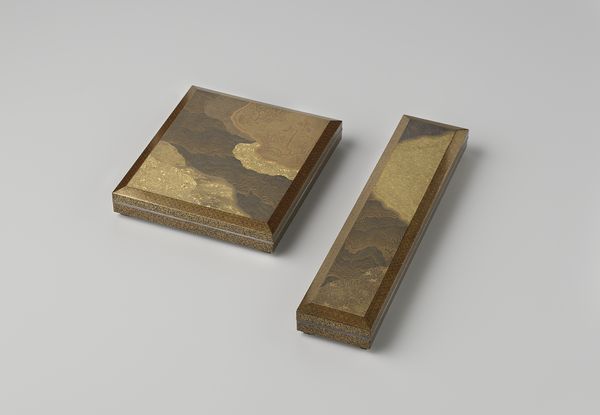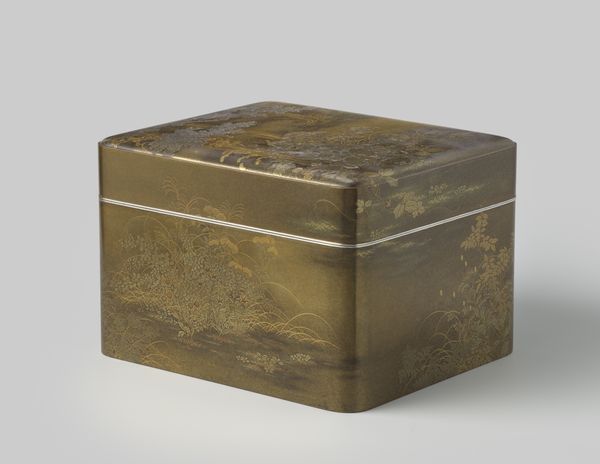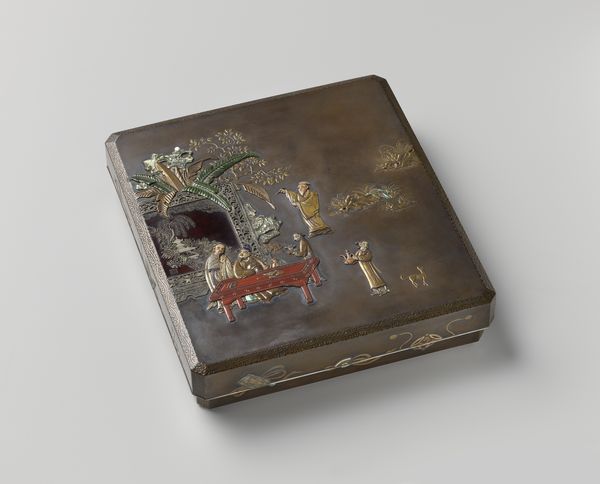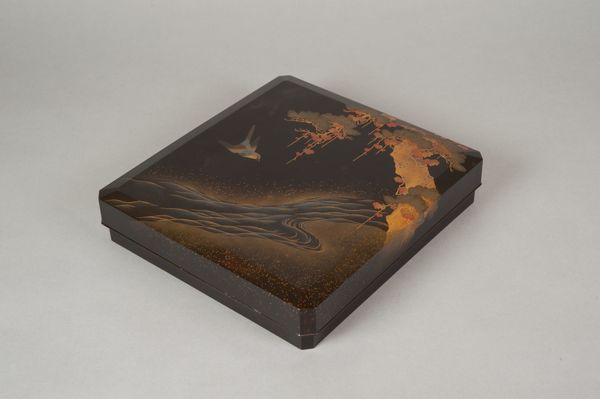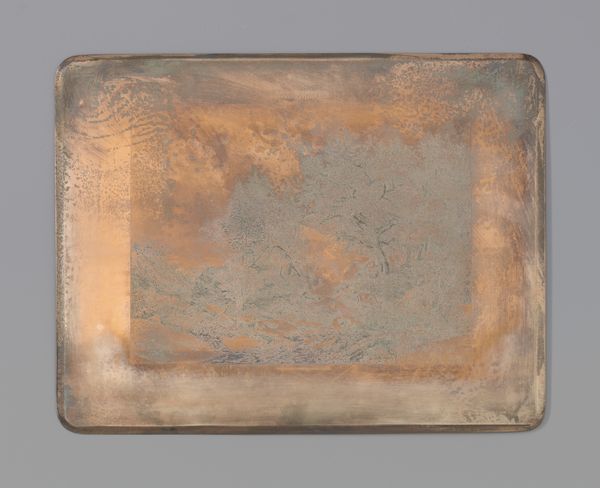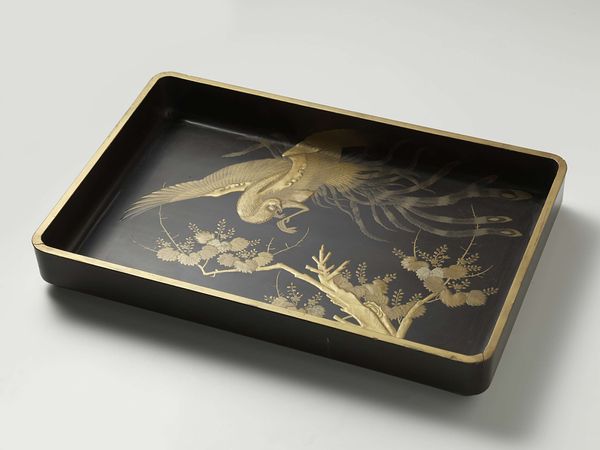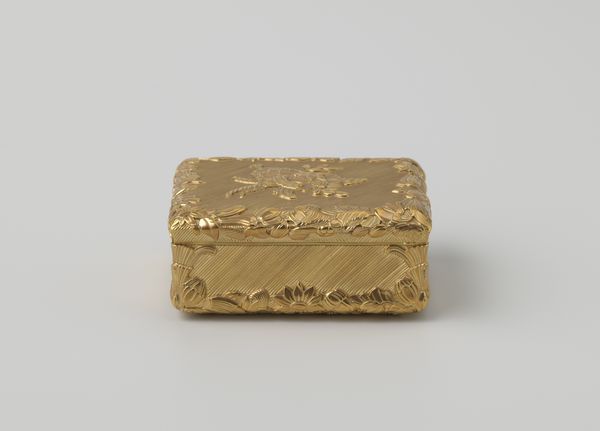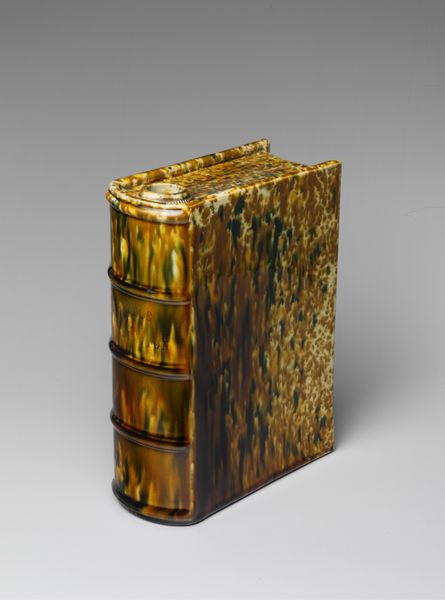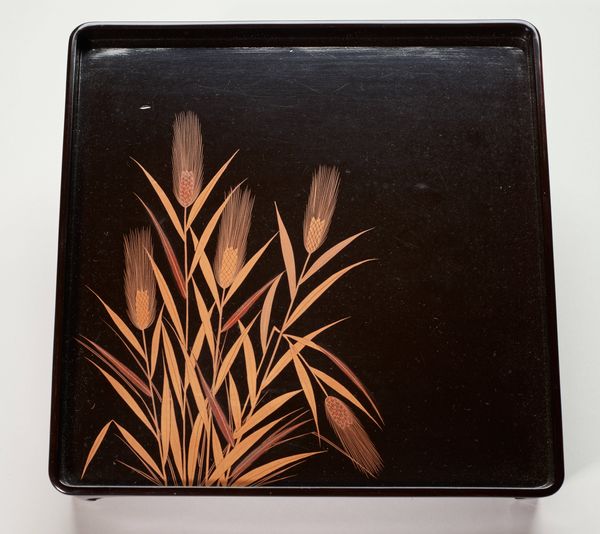
Dimensions: height 4.5 cm, width 23 cm, depth 26 cm, height 17 cm, width 29 cm, depth 32.5 cm
Copyright: Rijks Museum: Open Domain
Curator: Looking at this writing box, I’m immediately drawn to its serenity, that contemplative mood. The muted tones, the weeping willow, it whispers of quiet moments and introspective thoughts. Editor: This is a Japanese writing box, circa 1905, created by Funabashi Shūmin. It depicts a view of Sarusawa Pond. Its very function and form locate it within traditions that have historically served elite demographics. Consider access to literacy itself and the tools to express it, which are laden with cultural significance. Curator: Precisely. The very act of writing becomes almost ceremonial. Note the use of traditional motifs in its decoration, for example, the willow and the pond itself—these are far from simple aesthetic choices. In East Asian iconography, the willow often represents resilience and adaptability but can also symbolize the fragility of beauty. Editor: And ponds or lakes, reflecting surfaces, historically mirror the human condition, offering clarity while suggesting layers beneath what’s immediately visible. Given its age, think of this box existing as the Russo-Japanese War concluded, marking a pivotal moment in Japanese modern identity. Its use potentially served as a tangible ritual embedding the owner into a globalizing yet uncertain world. Curator: That tension is subtly present isn't it? Even the miniature landscape, seemingly peaceful, hints at greater cultural forces in play. The decorative style recalls Ukiyo-e traditions—those "pictures of the floating world"—yet presented on such an intimate, personal object. It prompts one to contemplate how fleeting moments of beauty intersect with enduring cultural values. Editor: We should not divorce it from labor. Such meticulous craftsmanship is both a celebration of the artisan's skill and also a product of societal structures that dictate labor hierarchies. How are those inequalities coded and possibly reflected in this tranquil miniature world? Curator: It is difficult to definitively decipher those coded inequalities without more biographical data but to look closer is not to deny the box's beauty. I think rather it amplifies our understanding of how these precious objects both transcend and are completely enmeshed within their time. Editor: I agree, approaching any artwork as a closed text obscures more than it reveals. Analyzing art isn't merely aesthetic appreciation; it’s cultural criticism and the means for historical and political inquiries. Hopefully, our conversation sparks further engagement in that work. Curator: Absolutely, let’s hope the box continues to stimulate conversations about the interplay of history, meaning, and the power of symbolic representation for a long time to come.
Comments
No comments
Be the first to comment and join the conversation on the ultimate creative platform.
